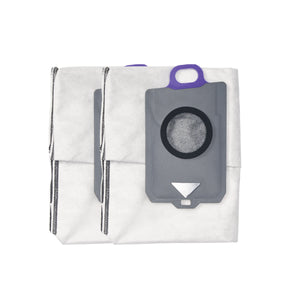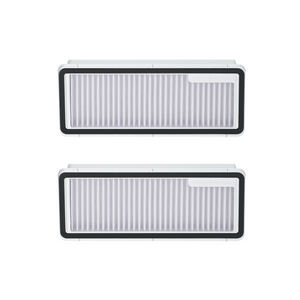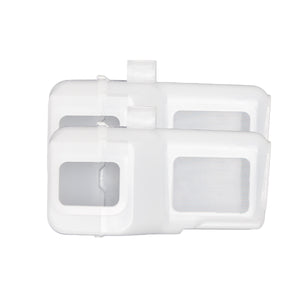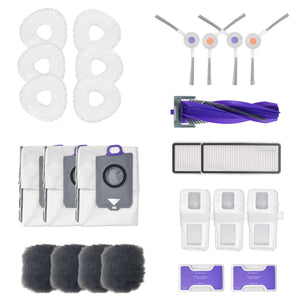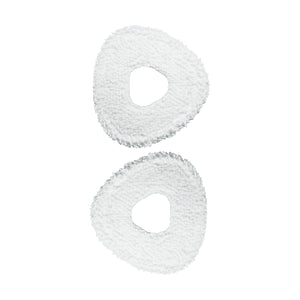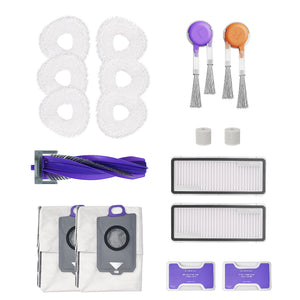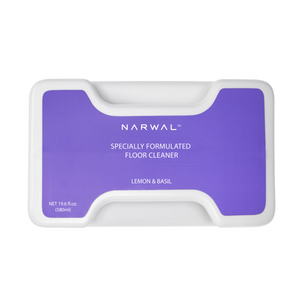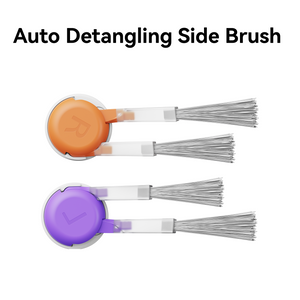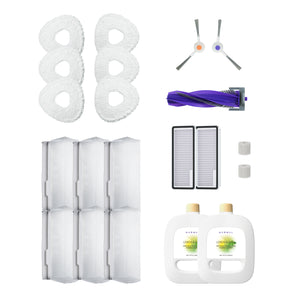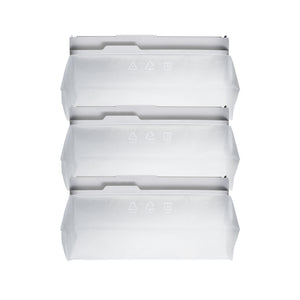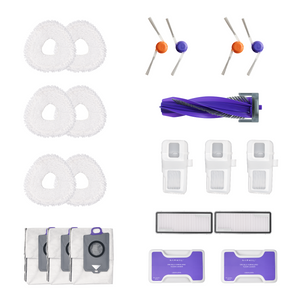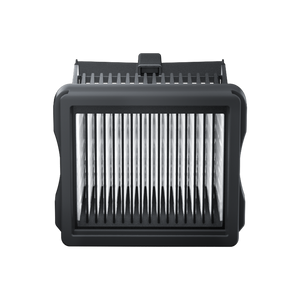Yes — most robot vacuums can go over door thresholds, typically handling heights between 0.24 inches (6 mm) and 0.79 inches (20 mm). Their ability to climb depends on the robot’s wheel size, motor power, and ground clearance, which together determine how easily it can move between rooms.
Many people find that their robot vacuum gets stuck on door sills or raised edges, especially in older homes with taller thresholds. This article explains how robot vacuums cross thresholds, highlights the best models for different heights, and offers simple fixes if yours struggles to climb. By understanding these factors, you’ll know exactly which features matter for smooth cleaning across every room.
How Robot Vacuums Go Over Thresholds
Most robot vacuums can climb door thresholds between 0.6 and 0.8 inches (15–20 mm) by combining large wheels, high-torque motors, and flexible suspension systems. These features work together to provide traction and lift — allowing the robot to move over raised edges without dragging or stopping.
Premium models, such as the Narwal Freo Z10 Ultra and Ecovacs Deebot N10+, have been tested to cross thresholds up to 0.83 inches (21 mm), the highest among current consumer models. In general, higher ground clearance and stronger wheel motors make for smoother transitions between rooms.
How Robots Handle Cords and Small Obstacles
Cords are one of the most common obstacles for robot vacuums. Because cords are soft and flexible, brushes or wheels can easily get tangled, forcing the robot to stop. To prevent this, most modern models use infrared or AI object detection to recognize cords and reroute automatically.
For homes with many exposed cables, it’s best to secure cords along walls or under rugs. Choosing a robot with advanced obstacle avoidance, like Narwal’s Dual RGB AI Vision, helps prevent tangling and improves navigation safety.
Can Robot Vacuums Work on Uneven Floors?
Yes — most robot vacuums can handle small bumps or uneven areas within a 0.4-inch (10 mm) difference in height. Their suspension adjusts automatically to maintain traction and suction. However, large gaps or sudden drops can still interrupt cleaning, so it’s important to ensure smooth transitions between rooms.
Performance varies by design: robots with larger wheels, 20 mm+ clearance, and adaptive motors perform best on mixed flooring.
Robot Vacuum Threshold Height Comparison
Different robot vacuums have varying climbing abilities. Threshold height mainly depends on the wheel design, motor torque, and body clearance — features that determine how easily a robot can move between rooms. The table below compares several top models tested for door sill and threshold climbing.
|
Model |
Max Threshold Height |
Key Feature |
|
Narwal Freo Z10 Ultra |
0.79 in / 20 mm |
Dual AI cameras, Carpet auto-lift system |
|
Narwal Freo Pro |
0.79 in / 20 mm |
AI DirtSense detection + LiDAR 4.0 mapping |
|
Ecovacs Deebot N10+ |
0.83 in / 21 mm |
High-torque wheels for tall thresholds |
|
iRobot Roomba j9+ |
0.63 in / 16 mm |
Carpet Boost for power on transitions |
Most modern robots handle thresholds between 0.6 and 0.8 inches, while advanced models like Ecovacs N10+ and Narwal Freo Z10 Ultra perform best on taller doorways.
If your home has raised sills or connecting rooms with uneven levels, choose a vacuum with 20 mm+ climbing height and AI obstacle recognition for smoother transitions.

Best Robot Vacuums That Can Go Over Thresholds
Some robot vacuums are built to handle higher door sills than others. When comparing models, focus on their maximum climbing height, traction design, and navigation system, which together determine how smoothly they cross thresholds.
Best for Mopping Performance — Narwal Freo Z10 Ultra
The Narwal Freo Z10 Ultra climbs thresholds up to 0.79 inches (20 mm) while maintaining strong cleaning power. Its MopExtend™ and EdgeSwing™ systems clean corners and edges effectively, and its DualFlow Tangle-Free brush prevents hair wrapping — ideal for homes with pets or kids.
[cta:narwal-freo-z10-robot-vacuum-mop]
Best for Highest Thresholds — Ecovacs Deebot N10+
The Ecovacs N10+ handles thresholds up to 0.83 inches (21 mm), the highest among consumer models. It uses large traction wheels and high-torque motors for smooth climbing, plus LiDAR navigation to move between rooms without stopping.
Best Value for Everyday Homes — Narwal Freo Pro
The Narwal Freo Pro offers a strong balance of performance and price, climbing up to 0.79 inches (20 mm). It combines AI DirtSense™ detection with automatic mop lifting, making it ideal for homes with mixed floors and moderate thresholds.
[cta:narwal-freo-pro-robot-vacuum-mop]

What Do Users Say About Robot Vacuums and Thresholds?
Most buyers want to know not just the specs, but whether robot vacuums actually work in real homes with door sills and floor transitions. Community feedback highlights a few consistent patterns:
- Crossing average thresholds works fine. Many users report that most modern models easily handle door sills around 0.6–0.8 inches without issues.
- High thresholds are still tricky. In forums, owners of older or entry-level models often mention getting stuck on thresholds above 1 inch, which interrupts cleaning.
- Premium models show clear advantages. Reviews on Reddit and tech communities frequently praise advanced designs—such as Narwal Flow, with its ability to climb up to 1.6 inches (40 mm)—as true corner-friendly and high-threshold robot vacuums.
- Floor transitions matter. Users note that robots sometimes slow down or adjust angles when crossing from tile to carpet. Models with auto mop-lifting features perform better in these scenarios.
By combining technical specs with real-world experiences, it’s clear that choosing the best robot vacuum that can go over thresholds means looking at both threshold height ratings and proven community results.
How to Choose a Robot Vacuum That Can Go Over Thresholds
To choose a robot vacuum that can go over thresholds, start by understanding your home’s floor layout and the height of your door sills. The best models combine strong climbing power, smart sensors, and solid traction to move smoothly between rooms. Here are five key factors to consider when making your choice:
-
Measure Your Thresholds Accurately: Use a tape measure to check the height of each door sill. Most vacuums climb 0.6–0.8 inches (15–20 mm) — if yours are higher, look for models rated above 20 mm. Rounded edges are easier for robots to climb than sharp or flat ones.
-
Check the Climbing Height Rating: Always verify the official maximum climbing height listed by the manufacturer. For example, the Narwal Freo Z10 Ultra climbs up to 0.79 inches, while a few models can reach slightly higher.
-
Look for Smart Design Features: Larger rubber wheels, stronger motors, and higher ground clearance help the robot climb without dragging or getting stuck.
-
Choose Advanced Sensors and Navigation: Models with AI object detection or LiDAR mapping can detect thresholds and adjust speed or angle automatically for smoother transitions.
-
Match the Robot to Your Home Layout: Homes with many rooms or tall door sills need stronger climbing and precise mapping. Open layouts can prioritize suction or mopping efficiency. For mixed floors, choose one with auto mop lifting to avoid wet carpets.
Solutions If Your Robot Vacuum Cannot Cross High Thresholds
If your robot vacuum struggles to cross door thresholds, a few simple fixes can help improve its mobility.
1. Use a Threshold Ramp
The easiest and most reliable solution is to install a threshold ramp. Rubber or aluminum ramps create a smooth incline that lets the robot move between rooms without getting stuck.
-
Rubber ramps are flexible, grippy, and easy to remove.
-
Aluminum ramps are more durable for permanent setups.
-
Wooden ramps blend naturally with flooring and can be customized.
Before buying, measure your door sill carefully and ensure the slope is gentle enough for the robot’s wheels to climb safely.
2. Try a Simple DIY Fix
For temporary setups, place a low-pile rug or mat in front of the threshold to reduce height. You can also build a small wooden ramp using thin boards for better stability. For very high sills, combining both (a rug over a thin ramp) provides a smoother transition.
Always keep safety in mind — avoid tripping hazards and make sure the robot’s sensors can detect the ramp properly.

Effective Solutions for Robot Vacuums to Go Over Thresholds
Modern robot vacuums are built to handle more than just flat floors — many now climb thresholds smoothly, bridging rooms without stopping. With the right balance of wheel design, motor power, and AI navigation, they can manage door sills and raised edges up to nearly 0.8 inches high.
When choosing one, focus on how it adapts to your home’s layout and floor transitions, not just suction power. Features like auto mop lifting, traction control, and precise mapping make a big difference in real homes.
Brands like Narwal apply these technologies to solve practical cleaning challenges — helping robot vacuums move freely, clean efficiently, and maintain a truly hands-free experience across every room.

FAQs
What is the maximum height a robot vacuum can climb?
Most robot vacuums can handle thresholds between 0.6 and 0.8 inches (15–20 mm). High-end models, like the Narwal Freo Z10 Ultra, reach up to 0.79 inches (20 mm) and maintain traction without losing suction.
Can robot vacuums go over metal door sills?
Yes, most can — as long as the sill is not sharper or higher than their rated climbing height. Rubberized wheels improve grip and reduce slipping on metal surfaces.
Why does my robot vacuum get stuck on door thresholds?
Getting stuck usually means the threshold is too tall or the robot’s clearance is too low. You can fix this by adding a threshold ramp or adjusting the cleaning route in the app.
How can I help my robot vacuum cross higher thresholds?
Use a rubber or aluminum ramp to create a smoother incline. Keep thresholds clean and dry to improve traction, and ensure your robot’s wheels are free of debris.



















